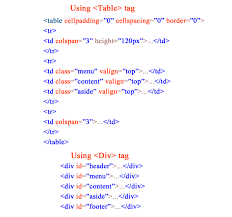10 Critical Mistakes to Avoid in Drupal Web Development

Introduction
The White House, the London Assembly and the Republic of France -- though entities are different, they all have one thing in common. Any guess? Yes, their official websites are powered by Drupal. Not just the powerful states, the media honchos like BBC, NBC, and MTV UK, and leading universities like Amnesty International and the University of Oxford, to name a few, rely on the Drupal web development framework to succeed in their missions and inch towards their visions of being an exemplary people-centric brand. Well, any Drupal web development company may present these facts to woo the confidence of their clients. And I believe there is nothing wrong in it because success and those behind it are admired everywhere. Interestingly, technology solution providers do so to instill a sense of trust in their target audiences and clients. However, for nurturing a trustworthy relationship with them, they must adopt a prudential and error-free strategy while aligning Drupal’s features and capabilities with their emerging needs. Here is a list of 10 critical errors that a company must avoid to build a user-friendly, scalable and flexible Drupal website.

1. Implementing Irrelevant Content Architecture
A website is for users, and the user’s engagement is based on the presentation of the content. But most of the times, due to a communication gap between the content development and Drupal web development teams, a Drupal website misses the relevant content architecture. This results in poor user-engagement, high bounce rate, and low conversion, and beyond doubt, the client is at the receiving end. Hence, the Drupal web development staff are advised to use standard templates, content types, and fields to make content presentation appealing and user-friendly.

2. Getting a Wrong Drupal Version, Folder Structure And Installation
Beginners often miss out on checking the minimum system requirements for a Drupal version and end up struggling with a lot of web development issues. Before getting started, they must ascertain that their system is ready to go with the Drupal version they need. Developers interested in getting started with Drupal 8, the latest release, can visit the website as indicated in the adjacent Link box to know about its minimum system requirements.
Installation of inappropriate themes and modules and use of faulty folder structure are not only detrimental to the current project and its workflow but also to the future debugging and upgrade processes. What to do? First, find the right modules and themes after analyzing the needs and challenges of the client. Second, get those installed in the right directories. It's recommended not to install them at the root level.

3. Doing Excessive Coding
Drupal developers should avoid excessive coding for developing new modules and themes to save time and avoid programming errors. Drupal offers close to 35, 000 modules and 2, 300 themes to choose from. Interestingly, they are well tested and certified by a community of professionals, and are competent in rendering a stable, responsive and secure website.

4. Ignoring Website Backup Plan
Immature Drupal developers often underestimate its importance. Not doing so, could have a severe impact on the resilience factor. In unpleasant scenarios, including, website crash, hack, code manipulation or data loss, it might become difficult to bounce back. Hence, programmers must adopt a proven website backup strategy. They should back up the website's database and its core and non-core files. Interestingly, the Backup and Migrate module made available by Drupal can help a developer to get the website synced easily with any online or offline backup system.

5. Implementing Bogus Search Functionality
Users resort to the Search tool available on a website when they want to find some relevant information in a quick and easy manner. Hence, the developer community should pay attention towards the kind of search a client or its target audiences would need. Drupal facilitates four types of searches: (a) And search (To get result matching multiple words having more or less the same meaning), (b) OR search (To get result containing one of a few terms), (c) Exclusionary Search (To find result by excluding certain terms), and (d) Advanced Search (to find most relevant information ruling out what the user doesn’t want. The user gets the option to set a range or area for the intended search).

6. Avoiding Spam Control
An effective spam control measure must be taken to check unsolicited communication. Doing this, secures a website against e-threats and keeps it running at its optimum. Leading search engines like Google and Bing also penalize the websites that don’t have the right spam control function. As a result, such websites can't rank better in the search result and this will drastically deteriorate the prospects of the linked entity or business.
Hence, developers must take a note of the quality guidelines of popular search engines. It may sound difficult to them. Hence, before integrating the SEO module in a website, they should seek the opinion of experienced SEO professionals.

7. Implementing a Complex Dashboard
Building a website is a one-time phenomenon, but website content update and maintenance is a non-terminating one. However, most of the times, Drupal developers forget this basic fact and end up building a complex back-end UI (user-interface). This erupts challenges for end-users responsible for the website content management.
Developers should provide a simple yet powerful dashboard. Despite having any tech know-how or skills a user should be able to exercise his or her control on the website to make changes as demanded by the business or its audience.

8. Skipping W3C Standards & Guidelines
W3C advocates for a standard website, delivering a uniform experience to global users, irrespective of devices they use, disabilities they suffer with and demographics that characterize them. And a website complying with its guidelines gets higher visibility on the web via different search engines. Thus, in the interest of the client and its audiences, a Drupal web development company must conform to the W3C standards. Implementing standard coding structure (HTML), style and format (CSS), and graphics (PNG raster format, SVG vector format, and the Canvas API) makes a website highly visible, easily accessible, and optimized.
9. Ignoring SEO Techniques
Ignoring SEO fundamentals is not something new. Doing so, gives hard time to SEO professionals in getting a website visible on the web. Hence, the Drupal website development process must go hand-in-hand with the SEO plan and strategy. The back-end user-interface must provide basic and advanced fields like keywords, meta-descriptions and image-caption along with social-media integration options to the users. The inclusion pays in the long run by bringing relevant and quality traffic to the website and that too without asking for a colossal digital marketing budget.


10. Undermining Roles And Permissions
A Drupal developer should assign action-based roles to users. Different levels of permissions should also be checked based on the demands of the client. This helps not just in neutralizing the security challenges but also streamlining the content workflow from development and review to publishing.
Thus, today the demand is to adopt a prudential, end-to-end and connected Drupal web development strategy to deliver a consistent and promising experience to users behind the desktop, tablet, or smartphone. A web development company should build a pro-user website after understanding their interests and preferences. The developers involved in the process must keep them abreast with the latest functionalities and capabilities made available by the ever-growing Drupal community (currently it has over 1 billion members) with the latest version released. For a company, while embarking on the process, the focus should be on decentralizing the power and capabilities of Drupal from its developers to the client and its customers and building a win-win strategy for everyone.
Hope the information was useful and you enjoyed reading. Do share your valuable comments.








